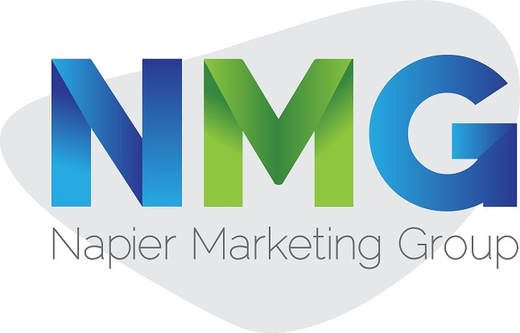9 Ways In Which Rewards And Recognition Technology Is Vital
Submitted By
Chloe Bennet
Chloe Bennet
The contemporary workplace is a wholly different beast from the workplace of the past. Where, traditionally, there were puritanical values of hard work as a privilege, self-sacrifices, sometimes enormous in size, being a necessary fact of making a living and a general air in which work, though it has to be done, is an unpleasant thing, there is now an entirely different attitude. In the contemporary workplace work may still be a privilege but its also an equal exchange. No party, employer or employee, should feel cheated by the process. Work-life balance is important as well. Mindfulness and employee mental health, with all of the possible stresses and anxieties triggered by too much work or by a toxic workplace, is now being acknowledged as important to constantly be addressing and innovating on how to improve. These changes are, overwhelmingly so, positive and they actually help employers. Staff productivity goes up and up, as well as retention rates, the happier and more well-optimized the work conditions are for everyone involved. It does, however, require more from you if you are an employer. You have to always be looking to boost productivity and to implement schemes which will put your employee base ahead of all the other companies competing and attempting to do the same thing.
One area in which much can be achieved for a company is with rewards and recognition. Though there have been elements of these two ideas in the workplace for eons, a really rigorously implemented program is only being embraced today, with the positive effects showing in their early form. Technology for the implementation of rewards and recognition can be a very useful tool for streamlining the process, boosting efficiency and results. So, with all that said, here are 9 ways in which rewards and recognition and their technological implementation can be put to use and why to use them.
1 - Universal R&R
One of the challenges facing rewards and recognition schemes is the constant issue of unbalanced and limited distribution of rewards and patchy recognition. It could be that employees in a certain team have an excellent set of overseers who happen to have the drive and enthusiasm to forge a really valuable and noticeable rewards and recognition scheme for the employees with in that unit. However, this isn’t then, necessarily, bled into the culture company-wide and you may find that employees become disgruntled at the idea that being in a certain team or unit will earn you things that being in another won’t. Technology is an excellent solution to this issue, with a centralized, universal system by which you can monitor the consistency of implementation.
2- Recognition For Engagement
It’s a simple enough fact that employees who are engaged in their work will produce better work, at better speeds and with a better attitude than employees who aren’t. Disengagement is also a dangerous thing, as it can spread through an office or other workplace until the employees no longer have any collective sense of engagement. If you let it get that far, it could spell absolute disaster for your company or organization. “Recognition, in all its various forms, is an excellent way to encourage engagement. It engrains a positive relationship between good, engaged working attitudes and success… in the form of notice from a senior”, writes Harvey Lully, HR manager at Academized and Assignment Service. So, if you want better employee engagement, give them better recognition for their work.
3 - Real-Time
The modern world moves very fast. Things that are relevant to people one day will be obsolete and forgotten the next. This is a difficult place to be in when trying to implement an effective rewards and recognition scheme. The solution to the problem is technology. Embracing a smart, digital rewards solution can allow you to be safe in the knowledge that employees will now be noticed and addressed over the high quality of their work potentially within moments of completing it, rather than having a note left on their desk a month after completing a project saying well done which, far from being an innocent compliment, is closer to a slap in the face.
4 - Linking Rewards To Complex Results
Knowing when to reward and recognize someone for the good work that they have achieved is difficult at the best of times. But these days, for whoever is administering the gratitude and reward, it can be almost impossible. “The state of a lot of industries are that the actual results of work are becoming more apparent but in a much more complex way. Data on company performance and public reactions to company work is vital but also hard to comprehend for an expert, let alone a layman”, says Marcus Stone, career expert at State Of Writing and Eliteassignmenthelp. Using technology for rewards allows you to link the rewards scheme directly to the company data, creating a clear-cut route between results, recognition and rewards.
5 - Rewards For Life Not Just For Work
A thorough and well-optimized recognition and rewards scheme won’t be simply work oriented, ending the second that employees clock out. Through the use of smartphones and all of the other digital tools we have to easily communicate, you can build reward schemes that extend beyond work, allowing employees to earn rewards by improving their own lives in a full sense, not only in relation to the office. It can demonstrate to employees that you care about them as well as making your workplace happier and healthier. Furthermore, it helps to craft ties between employees and companies which will improve retention rates and overall image.
6 - Reward Effort Not Just Success
It’s important that your use of any technology in a rewards and recognition scheme doesn’t lead to too binary an outlook on employee performance. Where a machine might see a failure, a human being looking at the same situation might see dedication, hard-work, determination and sacrifice with just a little dash of bad luck. Employees should always aim for success but recognizing effort can be a really good signal that you care for your employees regardless of the end result.
7 - Reward Customization
Unless the reward is a cash bonus, which it’s safe to assume most people in a workplace would want, reward optimization and customization comes into play. Where 15 years ago there may have been an employee of the month in a framed photo on the wall, today, with the help of technology, rewards can be a little more complex than that. Some people might really take to the idea of having the office all now how well they’ve done on a certain task. Whilst, for others, that sounds like their absolute worst-case scenario. If reward customization is done by employees for themselves through a portal or an app, you can find rewards which suit everyone, in a discreet way without needing the employee to worry about any of the implications of their choice.
8 - Employee Recognition Results In Customer Satisfaction
This is another causal link which I don’t think is to hard to see how it has come about. When employees are recognized and then rewarded for the work for which they are being recognized it can, literally speaking, improve their mood and overall happiness. Long-term though it engrains a sense in which positive behaviors lead to results, a very valuable message for any client-facing employees to learn as they deal with customers on a day to day basis. The more that employees are able to witness the positive outcomes of their performance the more likely they are to interact with customers in a way which satisfies the customers. A disgruntled employee is far less likely to make the sort of impression on a customer or potential customer that you would like.
9 - Digital Teaches You
A digital recognition and rewards program will teach you, as the employer or R&R head the benefits of the program to begin with. In its non-digital form it all still has benefits, but their exact impact can be harder to see. Digitalizing the system allows you to begin to create a data bank linking employee performance with engagement with the rewards and recognition program. This won’t only show you the benefits of the program itself, it will also help you streamline it, by identifying the areas in which it particularly works and trying to crack the code for the areas in which it particularly doesn’t. As data becomes more and more important, you will look back on your digitalization as being a very prudent move.
Conclusion
To conclude, rewards and recognition is a great scheme that brings you closer to your employees, your employees closer to the company and improves your company in a whole range of areas, from customer satisfaction through to recruitment efficiency. Digitalizing it adds that extra step of optimization and comfort for you and the employees who engage with it. So, using these tips, get recognizing and rewarding your employees.
One area in which much can be achieved for a company is with rewards and recognition. Though there have been elements of these two ideas in the workplace for eons, a really rigorously implemented program is only being embraced today, with the positive effects showing in their early form. Technology for the implementation of rewards and recognition can be a very useful tool for streamlining the process, boosting efficiency and results. So, with all that said, here are 9 ways in which rewards and recognition and their technological implementation can be put to use and why to use them.
1 - Universal R&R
One of the challenges facing rewards and recognition schemes is the constant issue of unbalanced and limited distribution of rewards and patchy recognition. It could be that employees in a certain team have an excellent set of overseers who happen to have the drive and enthusiasm to forge a really valuable and noticeable rewards and recognition scheme for the employees with in that unit. However, this isn’t then, necessarily, bled into the culture company-wide and you may find that employees become disgruntled at the idea that being in a certain team or unit will earn you things that being in another won’t. Technology is an excellent solution to this issue, with a centralized, universal system by which you can monitor the consistency of implementation.
2- Recognition For Engagement
It’s a simple enough fact that employees who are engaged in their work will produce better work, at better speeds and with a better attitude than employees who aren’t. Disengagement is also a dangerous thing, as it can spread through an office or other workplace until the employees no longer have any collective sense of engagement. If you let it get that far, it could spell absolute disaster for your company or organization. “Recognition, in all its various forms, is an excellent way to encourage engagement. It engrains a positive relationship between good, engaged working attitudes and success… in the form of notice from a senior”, writes Harvey Lully, HR manager at Academized and Assignment Service. So, if you want better employee engagement, give them better recognition for their work.
3 - Real-Time
The modern world moves very fast. Things that are relevant to people one day will be obsolete and forgotten the next. This is a difficult place to be in when trying to implement an effective rewards and recognition scheme. The solution to the problem is technology. Embracing a smart, digital rewards solution can allow you to be safe in the knowledge that employees will now be noticed and addressed over the high quality of their work potentially within moments of completing it, rather than having a note left on their desk a month after completing a project saying well done which, far from being an innocent compliment, is closer to a slap in the face.
4 - Linking Rewards To Complex Results
Knowing when to reward and recognize someone for the good work that they have achieved is difficult at the best of times. But these days, for whoever is administering the gratitude and reward, it can be almost impossible. “The state of a lot of industries are that the actual results of work are becoming more apparent but in a much more complex way. Data on company performance and public reactions to company work is vital but also hard to comprehend for an expert, let alone a layman”, says Marcus Stone, career expert at State Of Writing and Eliteassignmenthelp. Using technology for rewards allows you to link the rewards scheme directly to the company data, creating a clear-cut route between results, recognition and rewards.
5 - Rewards For Life Not Just For Work
A thorough and well-optimized recognition and rewards scheme won’t be simply work oriented, ending the second that employees clock out. Through the use of smartphones and all of the other digital tools we have to easily communicate, you can build reward schemes that extend beyond work, allowing employees to earn rewards by improving their own lives in a full sense, not only in relation to the office. It can demonstrate to employees that you care about them as well as making your workplace happier and healthier. Furthermore, it helps to craft ties between employees and companies which will improve retention rates and overall image.
6 - Reward Effort Not Just Success
It’s important that your use of any technology in a rewards and recognition scheme doesn’t lead to too binary an outlook on employee performance. Where a machine might see a failure, a human being looking at the same situation might see dedication, hard-work, determination and sacrifice with just a little dash of bad luck. Employees should always aim for success but recognizing effort can be a really good signal that you care for your employees regardless of the end result.
7 - Reward Customization
Unless the reward is a cash bonus, which it’s safe to assume most people in a workplace would want, reward optimization and customization comes into play. Where 15 years ago there may have been an employee of the month in a framed photo on the wall, today, with the help of technology, rewards can be a little more complex than that. Some people might really take to the idea of having the office all now how well they’ve done on a certain task. Whilst, for others, that sounds like their absolute worst-case scenario. If reward customization is done by employees for themselves through a portal or an app, you can find rewards which suit everyone, in a discreet way without needing the employee to worry about any of the implications of their choice.
8 - Employee Recognition Results In Customer Satisfaction
This is another causal link which I don’t think is to hard to see how it has come about. When employees are recognized and then rewarded for the work for which they are being recognized it can, literally speaking, improve their mood and overall happiness. Long-term though it engrains a sense in which positive behaviors lead to results, a very valuable message for any client-facing employees to learn as they deal with customers on a day to day basis. The more that employees are able to witness the positive outcomes of their performance the more likely they are to interact with customers in a way which satisfies the customers. A disgruntled employee is far less likely to make the sort of impression on a customer or potential customer that you would like.
9 - Digital Teaches You
A digital recognition and rewards program will teach you, as the employer or R&R head the benefits of the program to begin with. In its non-digital form it all still has benefits, but their exact impact can be harder to see. Digitalizing the system allows you to begin to create a data bank linking employee performance with engagement with the rewards and recognition program. This won’t only show you the benefits of the program itself, it will also help you streamline it, by identifying the areas in which it particularly works and trying to crack the code for the areas in which it particularly doesn’t. As data becomes more and more important, you will look back on your digitalization as being a very prudent move.
Conclusion
To conclude, rewards and recognition is a great scheme that brings you closer to your employees, your employees closer to the company and improves your company in a whole range of areas, from customer satisfaction through to recruitment efficiency. Digitalizing it adds that extra step of optimization and comfort for you and the employees who engage with it. So, using these tips, get recognizing and rewarding your employees.
about the contributor
Chloe Bennet is a content editor and proofreader at Boomessays and Essayroo. She helps with content management and works with freelance writers. Also, Chloe is a tutor at UK Essay Writing Service, academic website.



